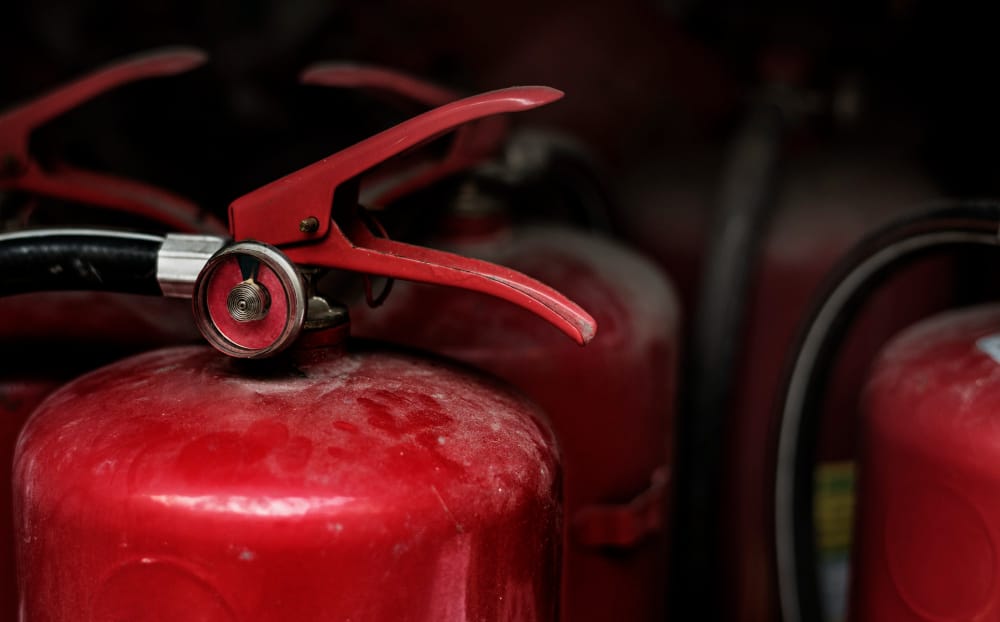The threat of fire is a constant concern for any property owner or ›manager. A fire can lead to catastrophic damage, loss of valuable assets, and a significant disruption to operations. While alarms and sprinklers are standard safety measures, many sensitive areas require a more advanced and targeted defense. If you’re looking for a solution that can automatically stop a fire before it spreads, you’re likely asking ‘what is a fire suppression system?’ This article will explain what these systems are, their different types, and how they provide crucial, proactive protection for your most valuable property and assets.
Table of Contents:
- Understanding Fire Suppression Systems
- How Fire Suppression Systems Work
- Types of Fire Suppression Systems
- Applications of Fire Suppression Systems
- Conclusion
Understanding Fire Suppression Systems
So, what is a fire suppression system? It is a safety solution designed to detect and control fires before they spread and cause significant damage. Unlike traditional fire sprinklers, which rely primarily on water to extinguish flames, suppression systems can use different agents—such as chemicals, foam, or inert gases—that are more effective in certain environments. This makes them particularly valuable in places where water could damage sensitive equipment, like data centers, commercial kitchens, or manufacturing facilities. While sprinklers are highly effective for general building protection, fire suppression systems offer a broader range of methods to stop a fire quickly and reduce the risk of costly downtime or property loss.
How Fire Suppression Systems Work
These systems operate through a combination of detection, activation, and suppression. First, sensors monitor the environment for smoke, heat, or flame activity. Once a potential fire is detected, the system automatically triggers an alarm and activates the suppression agent. Depending on the type of system installed, this could mean releasing clean agents, mist, foam, or other fire-extinguishing substances. The goal is to rapidly contain or extinguish the fire before it grows out of control, giving people more time to evacuate safely and minimizing property damage. In many cases, suppression systems also integrate with building alarm systems, ensuring emergency responders are notified immediately.
Types of Fire Suppression Systems
The right fire suppression system for a given space depends on the type of fire risk and the assets being protected. While all systems work to stop a fire, they do so using different extinguishing agents.
Clean Agent Systems
These are among the most popular for sensitive environments. They use non-conductive, non-toxic gaseous agents (like FM-200 or Novec 1230) that extinguish fires by disrupting the chemical reaction of combustion. The key benefit is that they leave no residue, meaning there is no cleanup and no damage to electronic equipment, servers, or valuable documents.
Carbon Dioxide (CO2) Systems
CO2 systems work by displacing the oxygen in the air, thereby smothering the fire. They are highly effective and are often used in industrial settings or electrical rooms. Due to the risk of asphyxiation, these systems are not recommended for occupied spaces and require specific safety precautions.
Dry Chemical Systems
Widely used in commercial kitchens and industrial spaces, these systems release a chemical powder that coats and suffocates flames quickly.
Water Mist Systems
These systems spray fine droplets of water that absorb heat and lower oxygen around the fire. They use far less water than traditional sprinklers, making them suitable for areas where water damage is a concern.
Chemical Foam Systems
Foam suppression systems are designed to smother fires involving flammable liquids, such as gasoline or oil. They create a layer of foam on the surface of the liquid, which cools the fire and prevents the release of flammable vapors.
By choosing the right suppression system for the right application, businesses and property owners can ensure stronger protection while minimizing risks to people and valuable assets.
Applications of Fire Suppression Systems
The versatility of fire suppression systems makes them useful in many different industries and property types. Some of the most common applications include:
- Data centers and server rooms – Protecting IT equipment and minimizing downtime is critical, making clean agent systems the preferred choice.
- Commercial kitchens – Restaurants, hotels, and cafeterias often use dry chemical or wet chemical systems to quickly extinguish grease fires before they spread.
- Industrial facilities – Manufacturing plants, warehouses, and chemical storage areas benefit from foam or dry chemical systems that can handle larger-scale fires.
- Healthcare facilities – Hospitals and labs need systems that won’t harm sensitive equipment or patients, making water mist or clean agent systems highly effective.
- Transportation and marine – Fire suppression systems are also used in vehicles, aircraft, and ships to protect passengers and prevent catastrophic damage while in operation.
No matter the industry, fire suppression systems provide targeted protection tailored to the unique risks of each environment. This not only safeguards property and equipment but also ensures the safety of people inside the building.
Conclusion
So, what is a fire suppression system? At its core, it’s a proactive safety solution designed to detect, contain, and extinguish fires before they can cause catastrophic damage. Unlike traditional sprinklers that rely solely on water, these systems use specialized agents—whether clean gas, foam, mist, or chemicals—to protect environments where water could be ineffective or even harmful. For property owners and managers, understanding these systems is not just about compliance; it’s about ensuring business continuity, safeguarding valuable assets, and most importantly, keeping people safe.
If you’re concerned about fire risks in your facility, the right suppression system can make the difference between a minor incident and a major disaster. Reach out to Ener-Spray today to explore solutions tailored to your property’s unique needs and gain peace of mind knowing you’re protected by industry-leading expertise.
